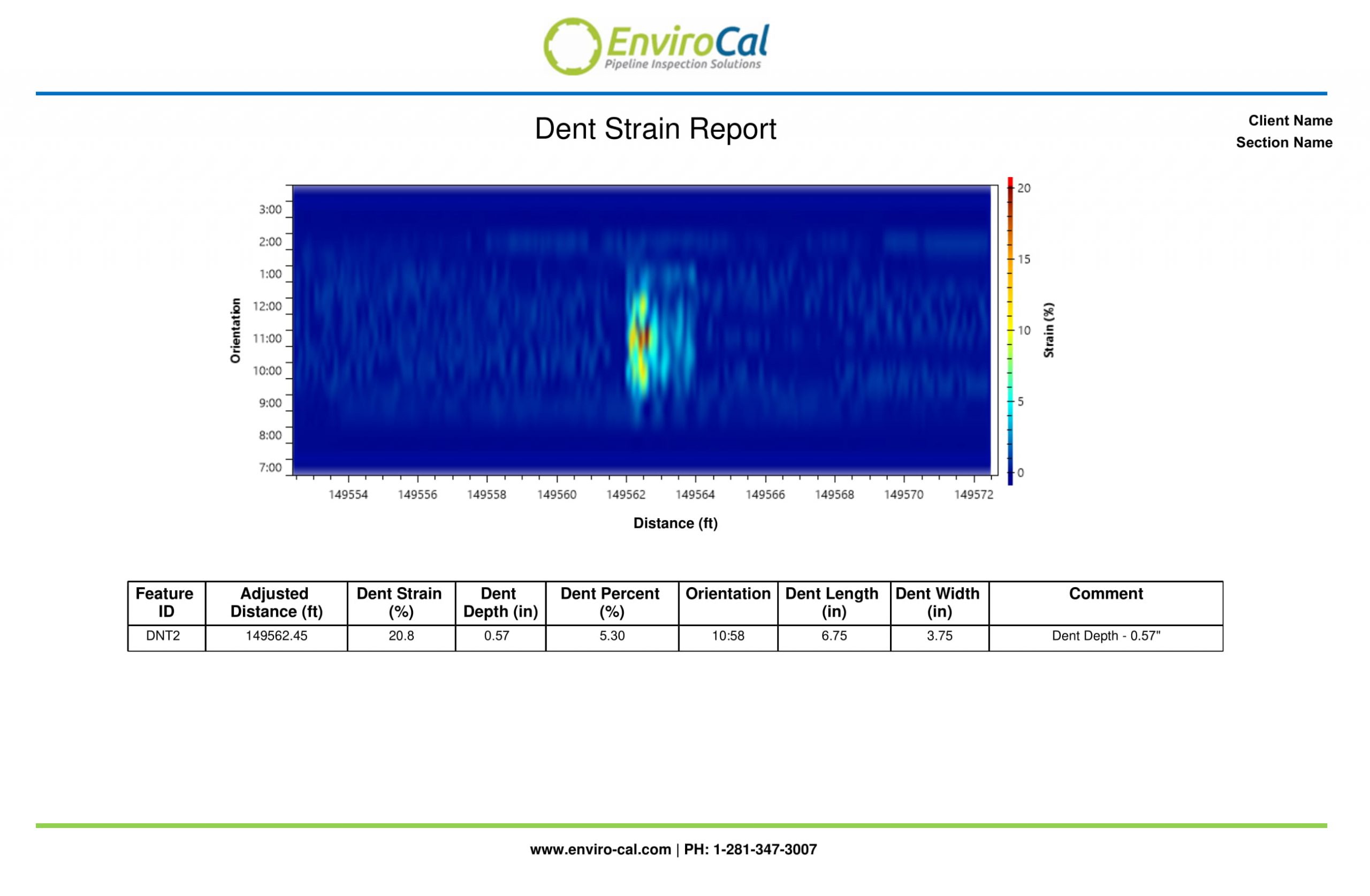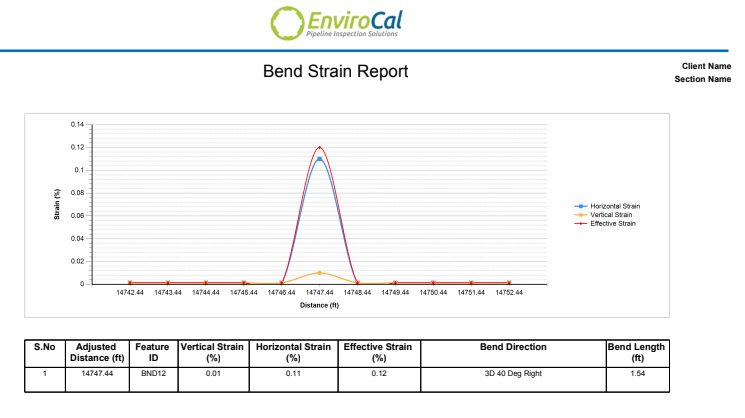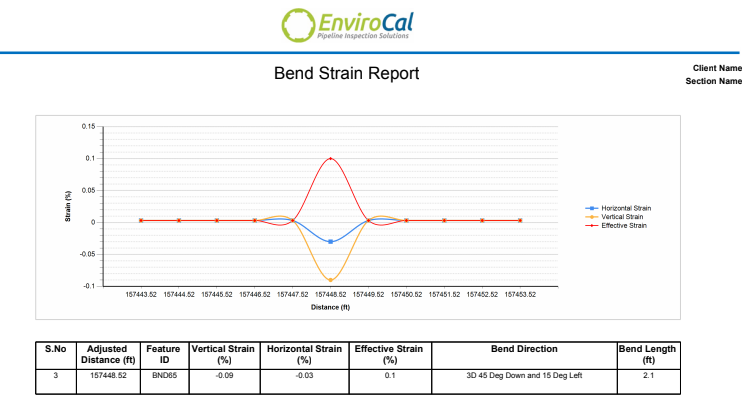Dent and Bend Strain Analysis
Dent Strain
EnviroCal’s Dent and Bend Strain Analysis provides a deeper understanding of the possible pressure reducing events associated with dent features. The top 5 strains are included with all high-resolution deformation and IMU reports at no additional charge.
Dent depth is the most commonly accepted method for categorizing whether a dent needs to be repaired or if it can be left without impacting the safe operation of a pipeline. Dent depth provides an adequate risk assessment for plain dents that lack stress concentrators or can help define the piggability of a line from a reduction standpoint. Dents that lack stress concentrators generally have minimal impact on burst pressure. Whereas dents with cracks or other concentrators are generally dangerous and require an expedited repair.
Dent strain analysis identifies localized elongations or compressions which are an indicator for whether a dent has or will develop cracking or can help identify other material damages that may cause a leak or rupture. Dent strain has no true relationship to the depth of a dent, but rather is defined by the dents curvature. Due to this, the maximum strain of a dent is rarely found at the deepest point and it becomes critical to calculating the strain across the entire dent to identify the most severe effective strain.
Using a combination of the two risk assessments gives a clearer understanding of the true risks a dent may pose to the longevity of a pipeline. Piggability and reduction percentages are important for continued maintenance, but do not adequately assess the impact a dent may have to burst pressure ratings or its likelihood to have associated stress concentrators.
Bend Strain
EnviroCal’s High-resolution deformation and IMU reports provide a means to monitor pipeline displacement by utilizing bend strain analysis. The early identification of bending strain on a pipeline can be critical in identifying potential pressure-reducing events before they occur. Due to the importance of this early identification, EnviroCal will be including the top 5 bending strains with all of their high-resolution deformation and IMU reports.
Bending strain is a common indication of surrounding ground movement and can be an early indication of areas likely to have associated stress concentrators such as potential cracking. Bending strain can occur without typical wave-like anomalies such as wrinkles, ripples, or buckles and as a result can go unnoticed for extended periods of time until the severity of the strain event causes an anomaly or pressure reducing event occurs. Bend strain analysis not only helps identify potential risks before they become pressure reducing events, but can also be used as a progressive analysis tool to gauge any pipeline movement over time to better understand potential high-risk areas prior to detrimental bending strain occurring.





